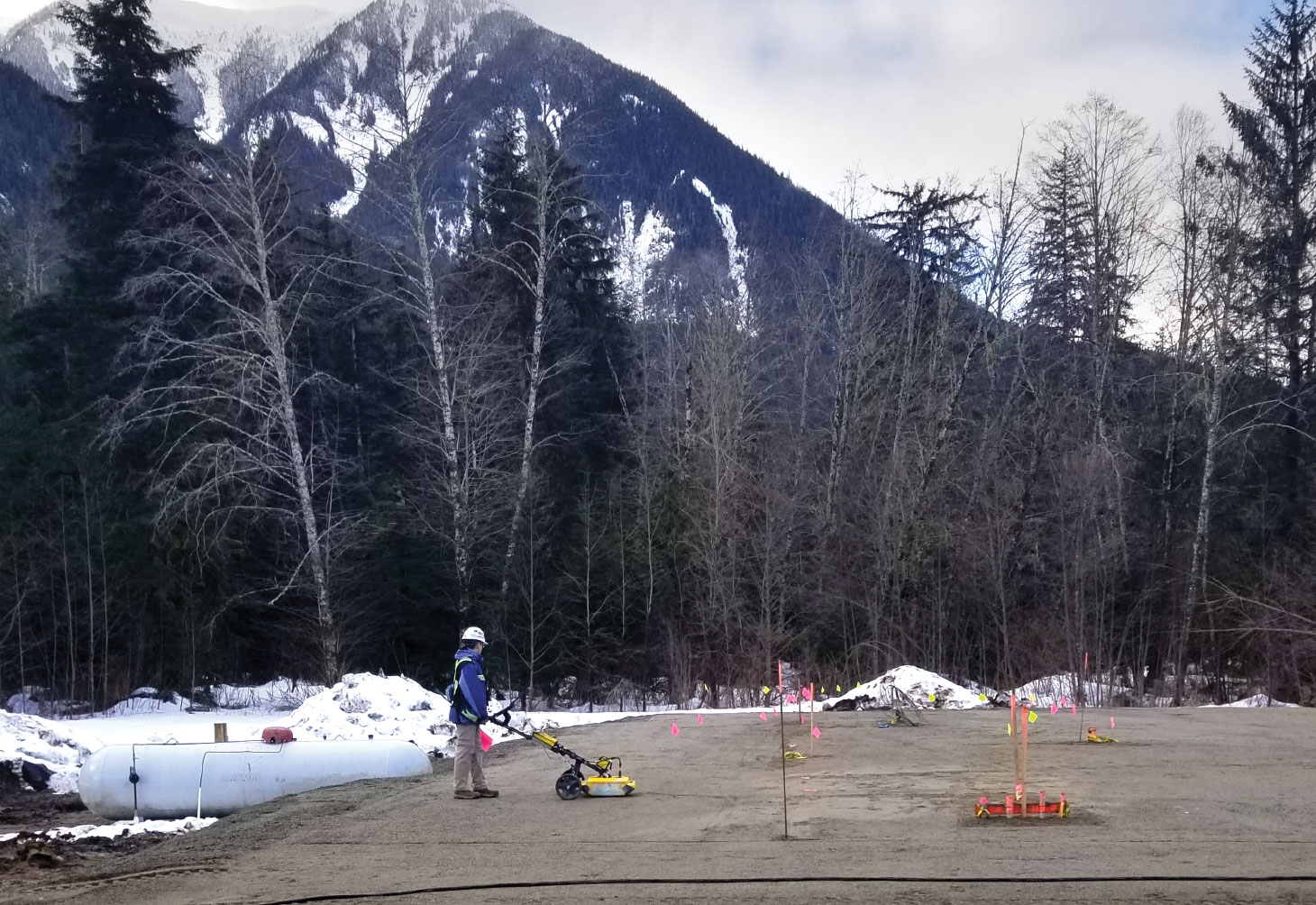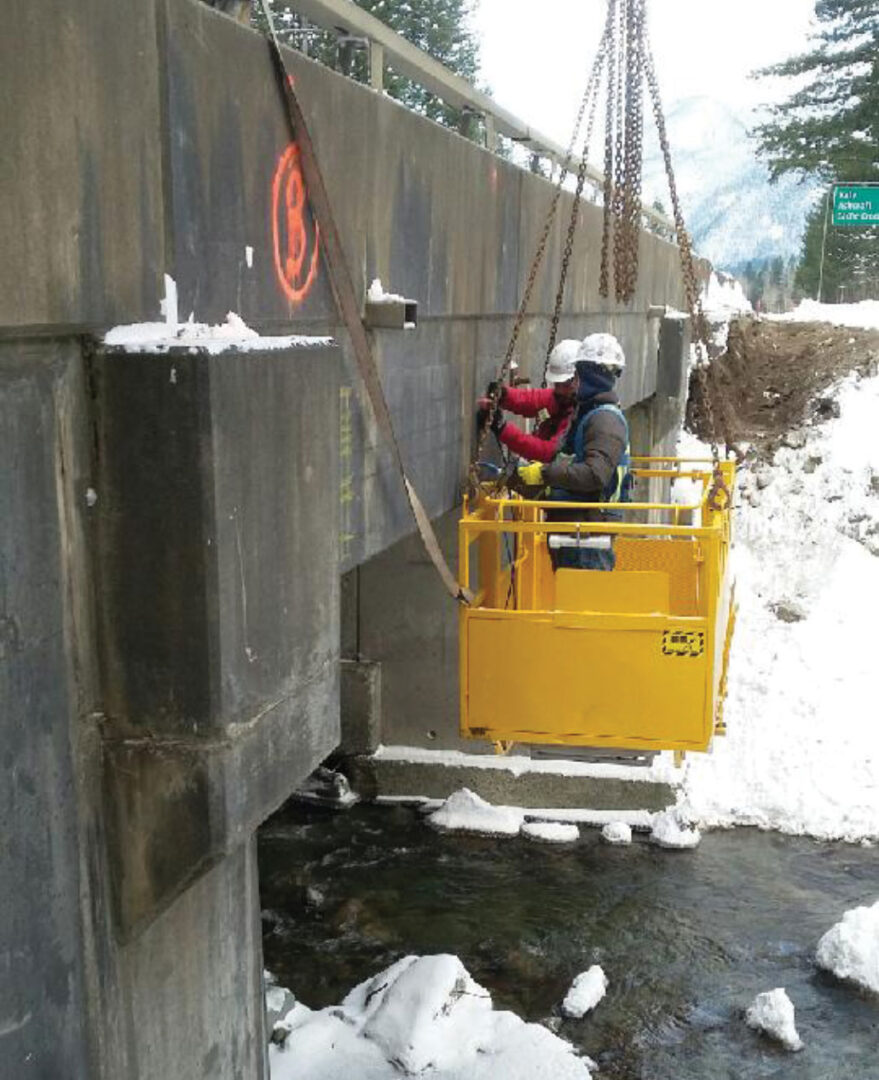
Terraprobe Geoscience Corp., headquartered in Coquitlam, B.C., provides ground-penetrating radar (GPR) services, primarily in Canada’s western provinces. The company serves the pile driving industry as one line of business.
It also offers concrete scanning, void or disturbed-soil detection services and GPR scanning training through decifergpr.com. For construction projects involving pile driving, Terraprobe’s primary function is to locate and map buried utility cables and pipes to protect infrastructure, help ensure safe working conditions and inform project design.
Incorporated in 2001, Terraprobe has been owned by David Warkentin since 2011. His experience in sales, marketing, senior management positions and other entrepreneurial roles in high-tech businesses prepared him to take on and learn about the GPR business.
Improving Results with New Equipment
GPR scans give “a first look at what’s underground,” says Warkentin, not a definitive picture. Where anomalies are revealed, pile driving contractors can either avoid digging in the area or further investigate to determine the cause.
The scans often indicate with a relatively high degree of accuracy where utility pipes and cables are located. Such infrastructure is generally found at standard depths of around three metres, well within the equipment’s range, which has typically extended to about 5 metres deep. The closer the object is to the ground surface, the more accurate the scan will be in terms of the object’s location on a horizontal plane, given the cone shape of the GPR beam; as the beam widens out, the signal is diluted, and the result is less exact.

GPR technology is not useful under certain conditions. Radar cannot penetrate a layer of clay, for example, although clay can be tentatively identified as the obstruction. Plants on the surface also prevent the use of traditional GPR, and saltwater lessens the effectiveness of the technology.
If the GPR scan shows no anomalies or apparent objects, Terraprobe can report, with sufficient accuracy, areas of safety for pile driving. Equipment manufacturers have made significant advancements in the last couple of year, allowing GPR users to achieve “better depth with better resolution,” says Warkentin.
The first of two major improvements relates to the frequencies at which GPR operates. Traditionally, each piece of GPR equipment has been set to a specific frequency, meaning that a service provider would need several systems to meet different requirements. However, some radar systems are now made to operate on a range of frequencies, from 500 MHz to 2 GHz. This enables users to scan smaller objects at depth without passing over the area several times with different equipment, saving time on the jobsite.
“The barrier to entry for this work is quite high. Companies will need expertise in GPR, data interpretation and processing, as well as in flying drones.”
David Warkentin, Terraprobe
The second significant development has been the creation of antenna array systems to replace the single antennas used on older equipment. Terraprobe now has machines with up to 36 antennas and a width of a metre and a half. These machines can be oriented in two planes, eliminating the need for more than one pass over an area. Equipment with this feature provide GPS coordinates that can be overlaid on a georeferenced Google Earth map or CAD drawing. This precision, and the speed at which it can be achieved, is a considerable benefit to pile driving contractors.
Future plans
Warkentin has been prepping his team to provide airborne, drone-based GPR service; several employees are now licensed to operate commercial drones. Terraprobe has been working with a Calgary-based company to develop a drone that includes GPR technology. It is expected to be ready for use in the next few months.
The drones will fly one to two metres off the ground and provide the same data as typical GPR machines, but will not be limited in the same way they are by small obstructions on the ground. The drones will also quickly cover large areas, says Warkentin. “The barrier to entry for this work is quite high. Companies will need expertise in GPR, data interpretation and processing, as well as in flying drones.”
Terraprobe is ahead of the game and nearly set to launch the service. “There may not be a lot of need for this in our current service area,” he said. “We may end up serving clients all over North America.”